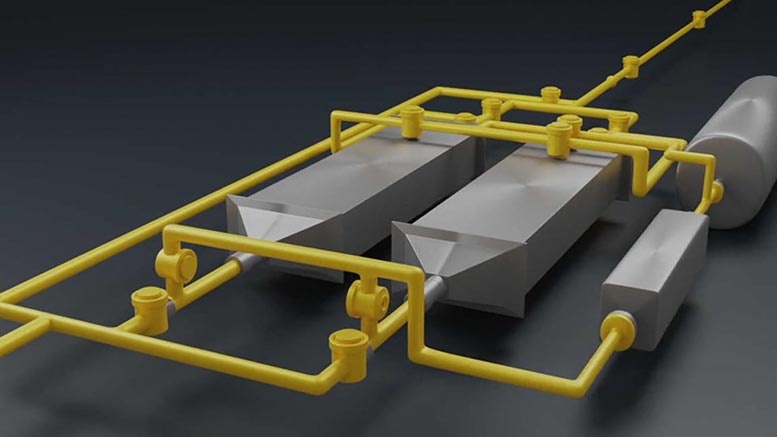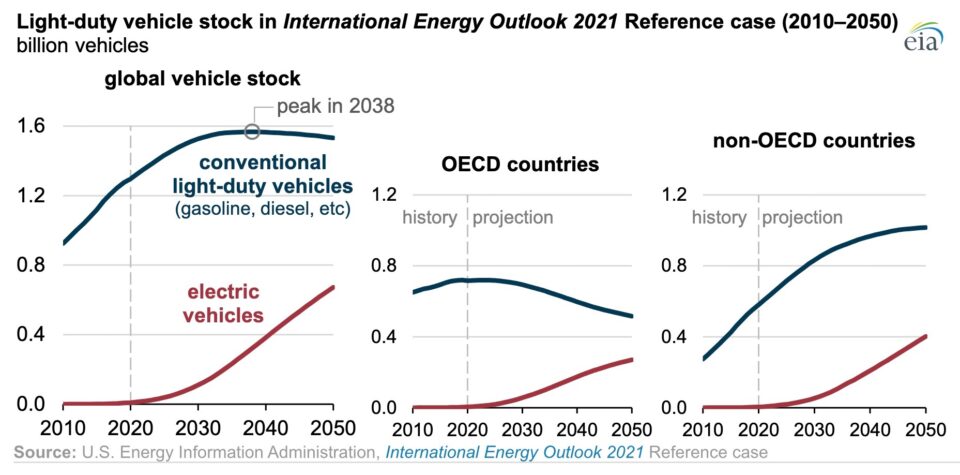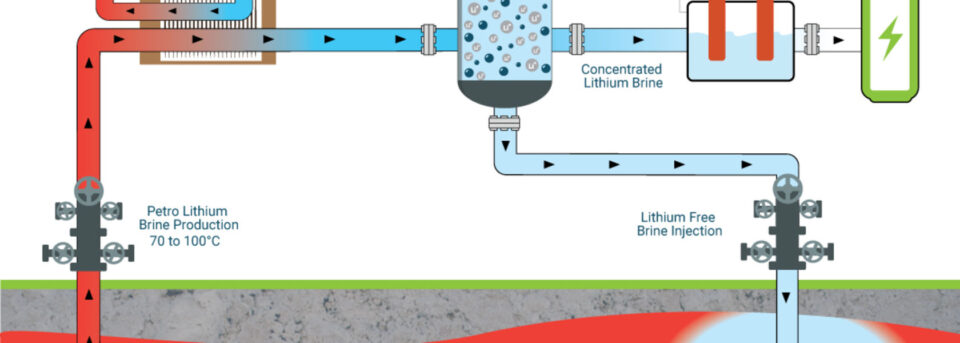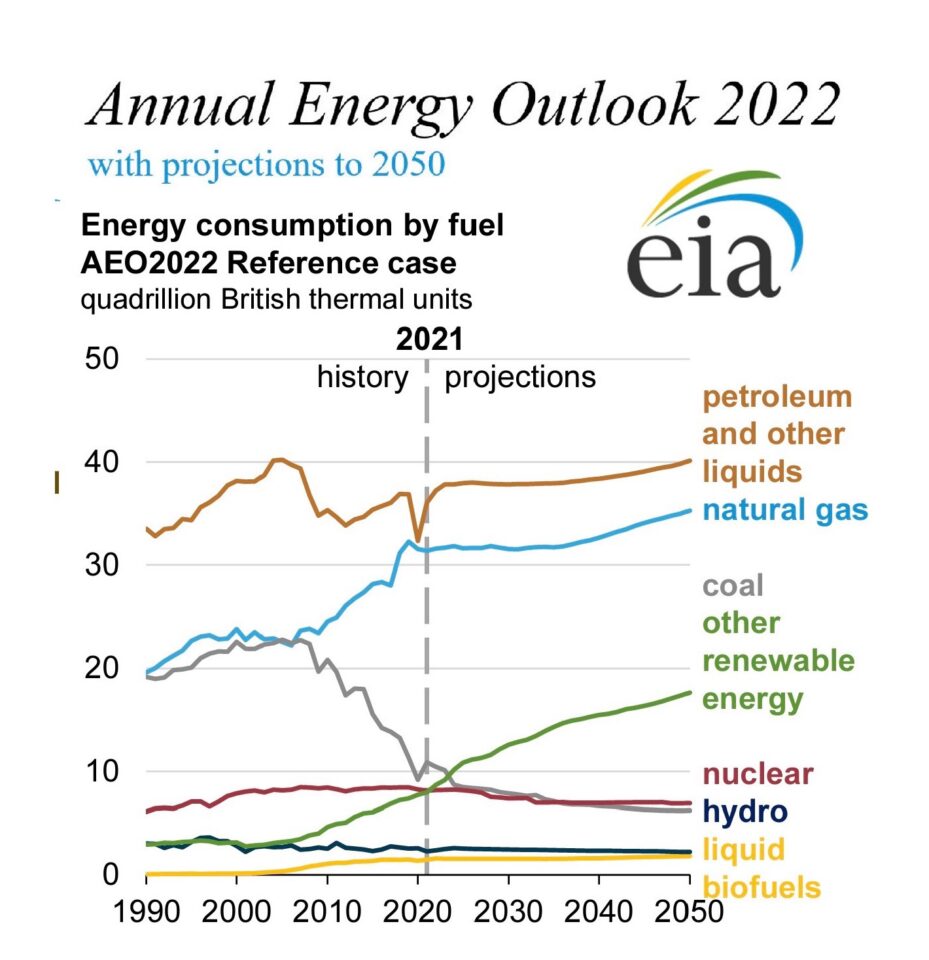5 Technologies That Can Dramatically Reduce Environmental Impacts Oil & Gas
Non-political entities such as the U.S. Energy Information Administration (EIA) have repeatedly confirmed the fact that we will be using a lot of oil and natural gas for many decades to come. In fact, the most recent EIA projections show oil and gas consumption in the United States will actually increase in the coming years rather than decline rapidly.
So, with the reality that we will need a lot of oil and gas for at least the next 30 years in mind, the real question is how can we minimize the environmental impact from hydrocarbon use. Fortunately, a number of technologies have been developed – or are being developed – that will allow us to reduce emissions and protect the environment while continuing to use hydrocarbons to meet our energy and modern product needs. Here are five of the most promising technologies.
Enhanced Oil Recovery with CO2
Enhanced oil recovery (EOR) using carbon capture and storage (CCS) is a rapidly-improving method of reducing carbon dioxide emissions while also increasing petroleum production. It also has rare strong bipartisan support, increasing the odds of its mass adoption in the coming years. Here’s how EOR with CO2 works.
Carbon capture and storage (CCS) is the direct capture of carbon dioxide from power plants, industrial facilities and the atmosphere.
EOR is a CCS method that involves taking captured carbon dioxide emissions and storing them permanently in underground oil reservoirs, subsequently increasing oil production by pressurizing the formation and “pushing” oil into the wellbore, as illustrated in the following graphic.

EOR using CO2 is currently responsible for 450,00 barrels of oil production per day in the United States and holds the potential to revive mature oil fields such as those most prominent in the Illinois Basin. CCS has also been identified by the United Nations Intergovernmental Panel on Climate Change (IPCC) as being pivotal to reducing emissions and avoiding the worst impacts of climate change. Even the Natural Resources Defense Council (NRDC) has called CO2-EOR a win-win-win for our environment, energy and economy.
Fortunately, a new peer-reviewed study finds there is enough potential underground CO2 storage to meet Paris climate agreement targets. So, if costs continue to fall, EOR with CO2 should be a viable tool to reduce CO2 emissions in the decades ahead.
E&E News also recently reported that a recent Supreme Court ruling will elevate EOR with CO2 as a favored emissions reduction technology. From the E&E News story:
“The Supreme Court’s recent climate ruling means carbon capture will likely form the backbone of any new EPA regulations targeting carbon dioxide emissions from power plants, energy experts and legal analysts said.”
CCS With Electro-swing CO2 Adsorption
A new CCS technology known as electroswing adsorption holds promise to reduce transportation emissions even as use of traditional ICE vehicles continues over the next few decades.
Researchers from the Massachusetts Institute of Technology (MIT) recently published a study detailing how the technology could use a battery-like device to suck CO2 directly from small and mobile emission sources and store it at a relatively low price ($50-$100 per ton of CO2).

The technology could be applied to automobiles and planes, and could also possibly be used for EOR, proving not only to be a key tool in addressing climate change but producing the oil the world will need for decades to come.
Widespread implementation of electro-swing technology would dramatically reduce the environmental footprint of continued widespread use of ICE vehicles. The EIA projects internal combustion engine (ICE) vehicle use won’t peak until 2038 and that there will actually be more ICE vehicles on the road in 2050 than there are now.

Waterless Hydraulic Fracturing Alternative
Multi-stage high volume hydraulic fracturing (HVHF) of horizontal oil and natural gas wells has elevated the United States to the status of being the world’s leading oil and gas producer. But it also uses a lot of water, which is problematic in arid oil and gas producing states such as Texas and New Mexico.
Fortunately, a promising technology known as Plasma Pulse Technology (PPT) shows potential of being a less water-intensive and cheaper alternative to both HVHF and conventional hydraulic fracturing of vertical wells.
PPT produces a high-pressure plasma pulse in the target pay zone via a powerful electrical discharge. A compression shock wave then propagates along the path of least resistance over long distances.

In a well that has previously been hydraulically fractured, the first two or three pulses clean existing perforation. The subsequent pulses then penetrate into the reservoir and create new micro-cracks that allow oil and gas to flow more readily into the wellbore.
Forbes recently reported that PPT is 75 percent cheaper to conduct on the traditional vertical wells most prominent in the Illinois Basin than conventional hydraulic fracturing. It looks to be ideal for re-fracturing existing wells but could replace hydraulic fracturing altogether in the coming years.
Using Associated Natural Gas to Fuel Cryptocurrency Mining
The capturing of associated natural gas produced along with oil at production sites and using that gas to fuel cryptocurrency mining is already proving to be an effective means to reduce flaring.
Not only does this practice reduce energy waste and emissions from flaring, it also reduces the carbon footprint of the highly energy-intensive process of cryptocurrency “mining” – which is actually a process of engineers and computers running complex math problems to access cryptocurrency at data centers.
The associated natural gas that would otherwise be flared due to the lack of gathering infrastructure at remote oil production sites is instead a captured to produce electricity for the “mining” process at data-centers located near the production sites.

Lithium Extraction from Produced Water
The push to electrify everything with electric vehicles and renewable energy technologies such as wind and solar is expected to increase global lithium demand up to 2,000 percent. The mineral is necessary to produce batteries for these technologies and the United States currently accounts for less than one percent of the world’s lithium due to vehement environmental group opposition to domestic mining.
However, co-produced brine from oil and gas production contains lithium and it could potentially be extracted from this otherwise useless byproduct of oil and gas production.
Natural Gas Intelligence reports, “Recovering commercial volumes of lithium from the oil and gas byproduct would bolster the United States’ domestic supply of the valuable mineral, but it won’t be easy.”
The University of Louisiana-Lafayette’s Daniel Gang, director of the Center for Environmental Engineering and Protection adds: “Mining lithium requires a highly selective recovery technology, extracting just the lithium from produced water. The technology is still in the benchtop-laboratory or pilot scale.”

Though challenging, figuring out a way to extract lithium from produced water would prove more ideal than relying on China for the metal. China has a near global monopoly on mining of cobalt, lithium and rare earth elements that are essential to producing the solar panels, wind turbines and batteries needed to capture energy generated by the sun and wind. China also controls more than 50 percent of world’s lithium processing.
Just as importantly, the technology could reduce the need for unprecedented and carbon-intensive mining – a win-win for the environment and our energy security.
Conclusion
It is often assumed that continued hydrocarbon use is synonymous with increased greenhouse gas emissions and other environmental impacts. But the fact remains that we will need to use oil and natural gas for many years to come, and fortunately a number of technologies are being developed that can allow us to protect the environment while using the traditional energy sources we need.

